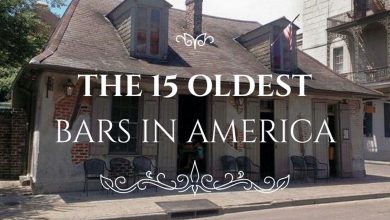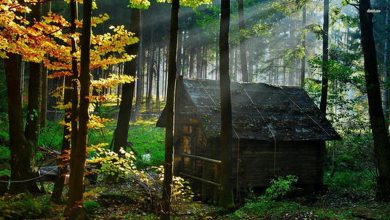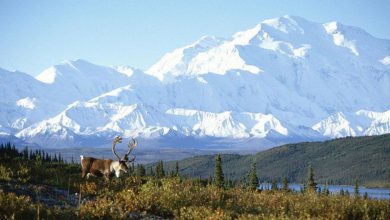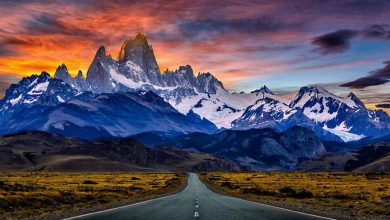The 20 Most Dangerous Roads in the World (20 Photos)
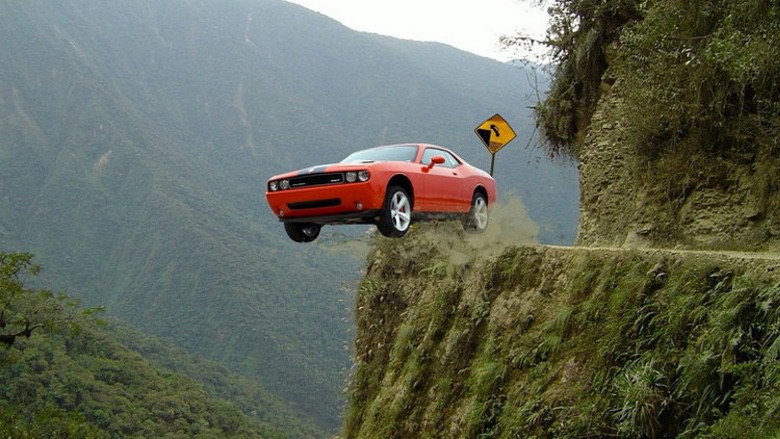
No matter how bad your daily commute is, it probably can’t hold a candle to the danger presented by some of the deadliest roads in the world. Twisting mountain paths full of danger, with no guardrails, rock slides, bizarre rules, and slick surfaces – these roads will test the skill and nerve of even the most experienced adventure seeker. Whether it’s Bolivia’s “Road of Death,” a Taliban-controlled gravel path high in the mountains, or Alaska’s road to nowhere, these dangerous and scary roads are full of breathtaking views and heart-stopping danger.
What is the most dangerous road in the world? These twisty paths and steep roads will have you gripping ten and two like your life depends on it… and it does. If you need to traverse one of these dangerous roads, both in America and all over the world, then make sure you have plenty of supplies, and certainly a AAA membership, not that they’ll always be able to come to get you.
Check out the scariest, windiest, scariest roads and highways on earth below and whatever you do, don’t run out of gas on them.
Karakoram Highway
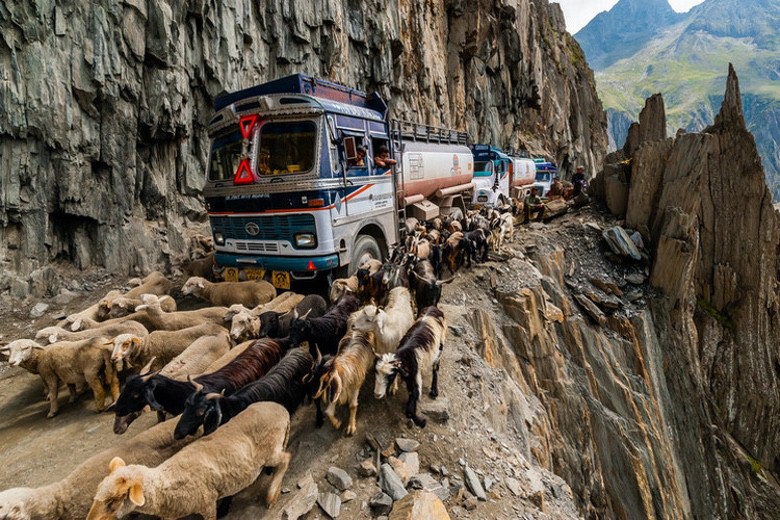
Connecting China to Pakistan, the “Friendship Highway” is actually not friendly at all. It’s 16,000 feet in the air, meaning altitude sickness is a serious issue for anyone braving its sharp turns. It also has the usual landslides, avalanches, rock slides and unpaved lanes common to mountain highways. You’re basically driving a narrow lane with flat rock on one side and an unguarded death drop on the other – plus it’s full of buses taking people to K2.
Yungas Road, Bolivia
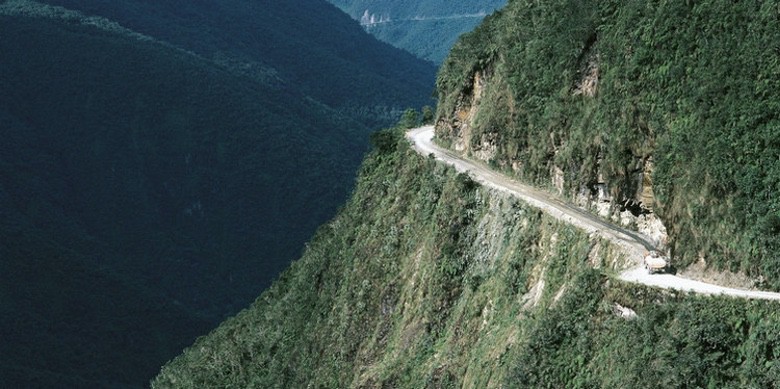
Generally thought of as the most dangerous road in the world, the winding 40-mile road from La Paz to Coroico is mostly single lane, with massive ascents and quick descents. It has terrible visibility, no guard rails, and bizarre rules that force drivers to drive on the wrong side of the road (Bolivians drive on the right, except on the Yungas Road, where they keep to the left) and stop almost on a dime while going downhill. It’s also prone to rock slides and bad weather that makes the gravel track slick and loose.
Large vehicles routinely attempt to pass each other, and with lanes that narrow down to as small as three meters wide, this often ensures death for both parties. Despite being modernized over a two-decade period, hundreds of people die on it every year, including numerous cyclists and foolhardy travelers. It’s not called the “Road of Death” for nothing.
Highway 101, Mexico
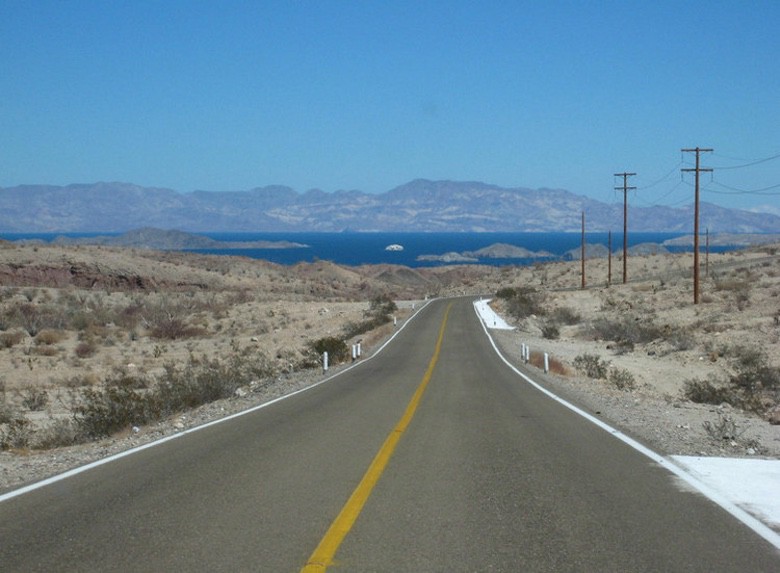
Highway 101 connects Matamoros (just south of Brownsville, TX) to Ciudad Victoria and beyond. It’s not inherently dangerous, as it’s well-paved and fairly straight. But virtually nobody drives on it due to its use by Mexican drug cartels – and the fact that large numbers of corpses are often found along its sides.
Cartel kidnappers are known to pull migrants off buses, cars are hijacked, towns terrorized, and multiple mass graves are found almost every year. The US government has warned residents not to use it.
Trans-Siberian Highway, Russia
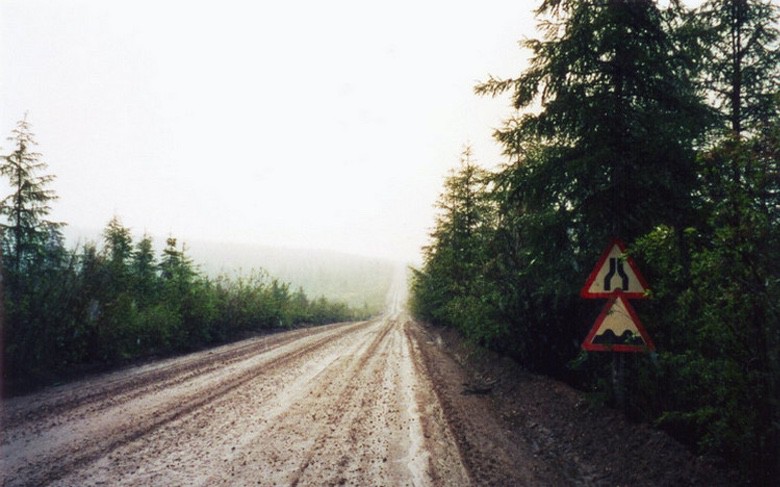
Connecting Vladivostok in the east to St. Petersburg to the west, Russia’s Trans-Siberian Highway is one of the longest in the world, crossing everything from forests to tundra to vast stretches of narcotizing nothingness. Much of the drive is uneventful, but there are sections that are deeply foreboding and dangerous. Some of the Siberian section is unpaved and traverses remote stretches far from help or gasoline. Russia also has a high per-capita death rate of its drivers, due to bad roads and drinking.
Kabul-to-Jalalabad, Afghanistan
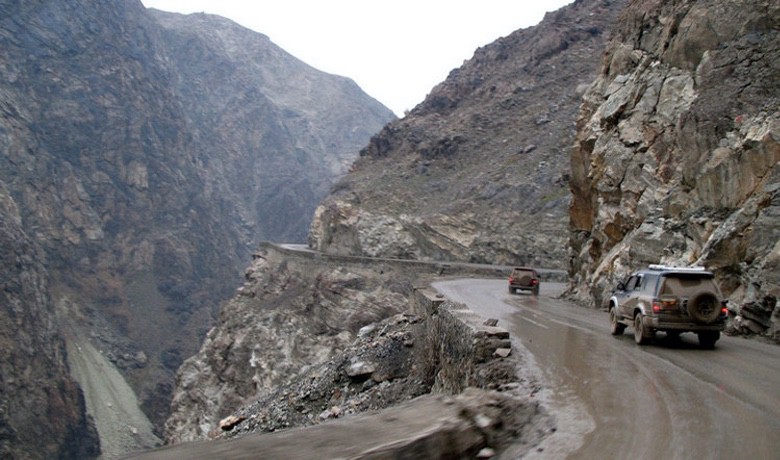
This is one of the most terrifying roads anywhere in the world – and for humanitarian reasons, one of the most important. It’s got terrible gridlock due to overloaded trucks getting stuck on it, steep vertical drops, sharp turns, and kamikaze drivers. Buses and trucks often slam into each other and tumble hundreds of feet into the valleys below, or cars simply plow into the rock walls.
The road has piled up such a high body count that locals have stopped keeping track of the death toll. Plus it’s deep within Taliban territory and was routinely shelled in the ’80s and ’90s.
Ruta 5, Chile
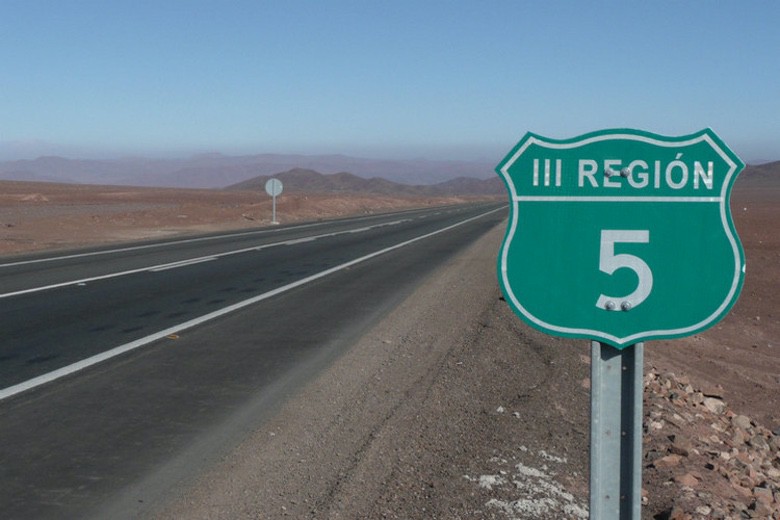
Chile’s Ruta 5 runs from the Peruvian border to Puerto Montt and connects via ferry to Chiloé Island. It’s 2,090 miles long, and, despite being modern and well-paved, it’s notoriously dangerous.
It’s only two lanes wide and has a high-speed limit, winding through deep valleys and littered with steep drops and long straight stretches in the middle of nowhere. The surrounding landscape of the Atacama Desert is also bare and featureless, meaning drivers easily lose their concentration and drive off the road or hit other cars.
Zojila Pass, India
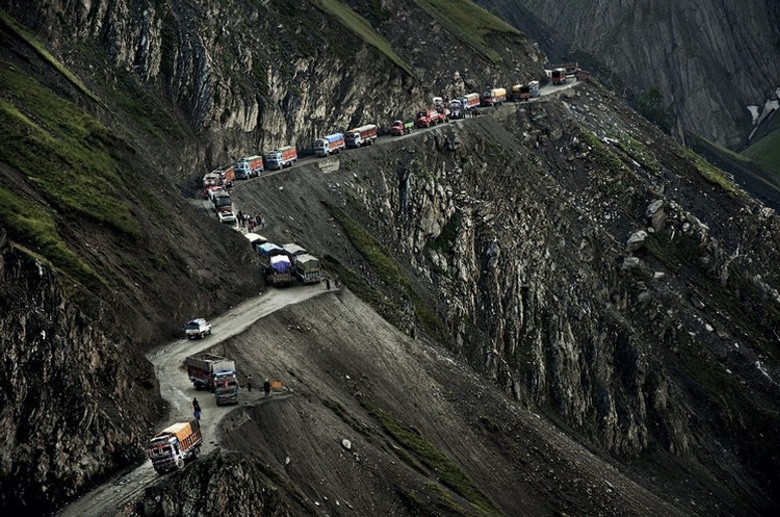
If you want to pick a remote road to get killed on, this winding mountain pass has it all: high altitude, high winds, mud, heavy snowfall, narrow lanes, steep drops, and no guardrails. The roads leading to the Himalaya Mountains are among the highest and deadliest anywhere, and Zojila is probably the harshest.
But in its favor, it’s the highest altitude at which tanks have operated in combat, during the Indo-Pakistani War of 1947.
The Barton Highway, Australia
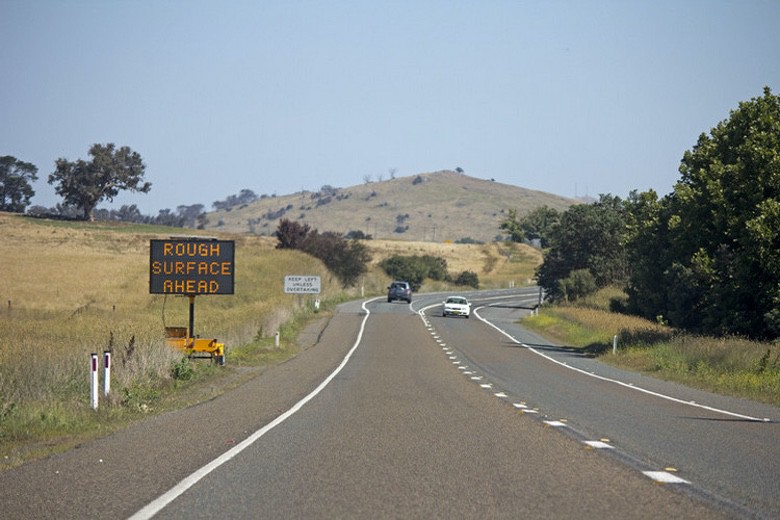
Connecting Canberra to Yass, the Barton Highway is generally thought to be the worst and most dangerous major road in Australia. Located in a rapidly growing part of the country, it’s too small for the large amount of traffic it gets and is in poor condition in many areas. It also has drivers who tend to tailgate, causing numerous traffic-clogging rear-end accidents.
Taroko Gorge Road, Taiwan
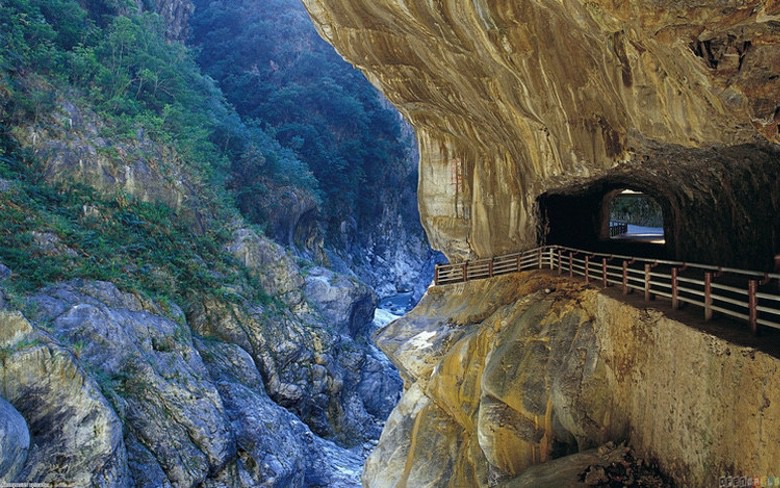
Probably the most dangerous route in Taiwan, this narrow mountain road offers spectacular views – and, depending on the weather, a pretty good chance of dying. Heavy rain can result in landslides, and there’s not a small chance of a cyclone hitting it out of nowhere. It’s also full of blind corners and steep drops, with pedestrians, cars, and tour buses all fighting for space.
Any Road in Eritrea
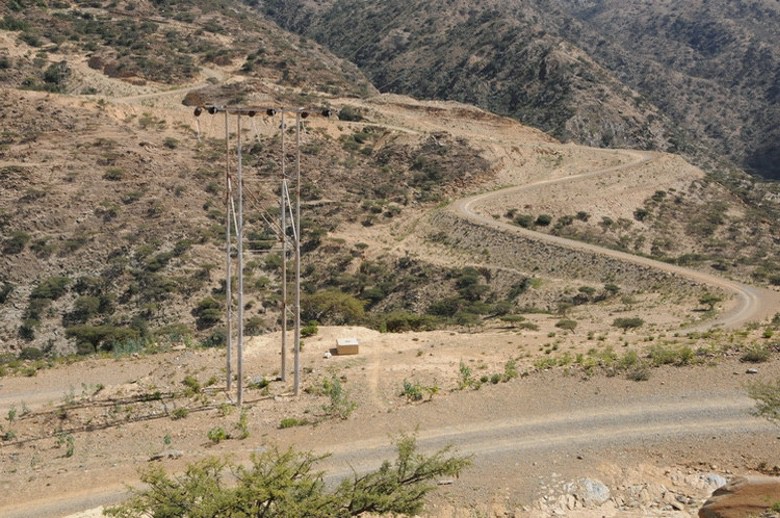
Located in the Horn of Africa, Eritrea has a population of about 6.4 million – and some of the most deadly roads in the world. According to the World Health Organization, there are an astonishing 48 road deaths in Eritrea each year per 100,000 people, compared to 16.5 in China, 13.9 in the US, and just 5.4 in Britain.
It has nine primary highways, most of which are unpaved asphalt or gravel, and they become virtually impossible to traverse in wet weather.
Highway 550, Colorado
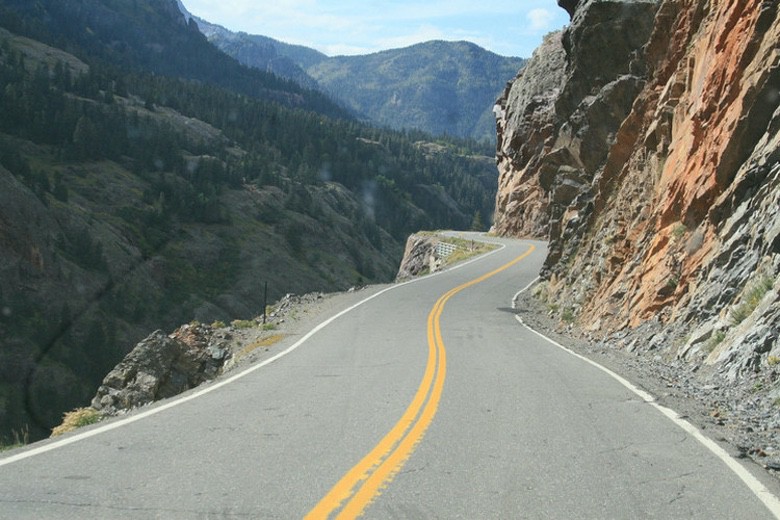
Known as the “Million Dollar Highway,” Colorado’s 550 is also one of the most dangerous in America. It climbs three different mountain passes, with large variations in temperature and road grade. It’s narrow, steep (it has a 9% grade at times), and unforgiving, with some parts having no guard rails. It’s not too bad as far as mountain roads go, and plenty of people drive it, but it’s best to go slow and not get distracted by the views.
How it got the nickname “Million Dollar Highway” is lost to history.
Highway 2, Montana
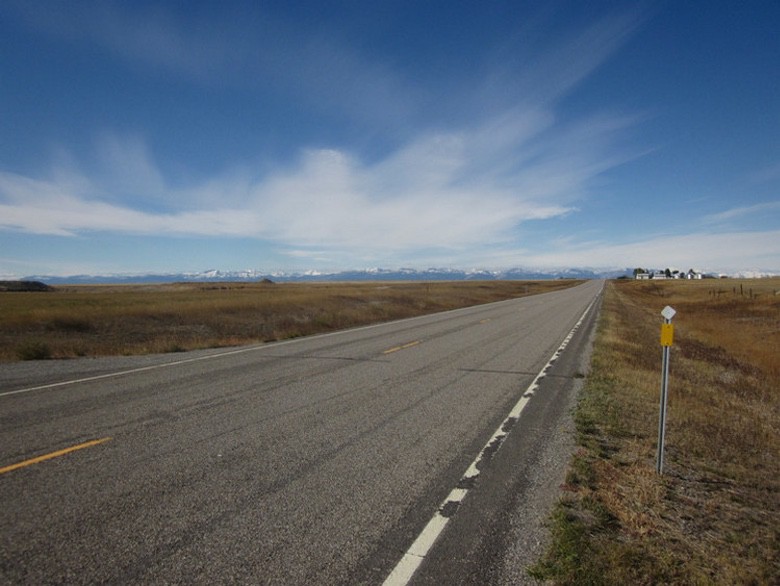
Leading to Glacier National Park, Highway 2 is a beautiful and picturesque piece of driving. It’s also the deadliest highway in America. It’s mostly flat and rural and doesn’t have a lot of drivers, so those that are on it tend to go way too fast. Visibility is poor, the weather tends to be bad, it sees a higher than average number of drunk drivers and animals jump out of nowhere in front of your car.
And because it’s so remote, ambulances can take at least an hour to respond to calls – meaning if you are in an accident you’re on your own.
James Dalton Highway, Alaska
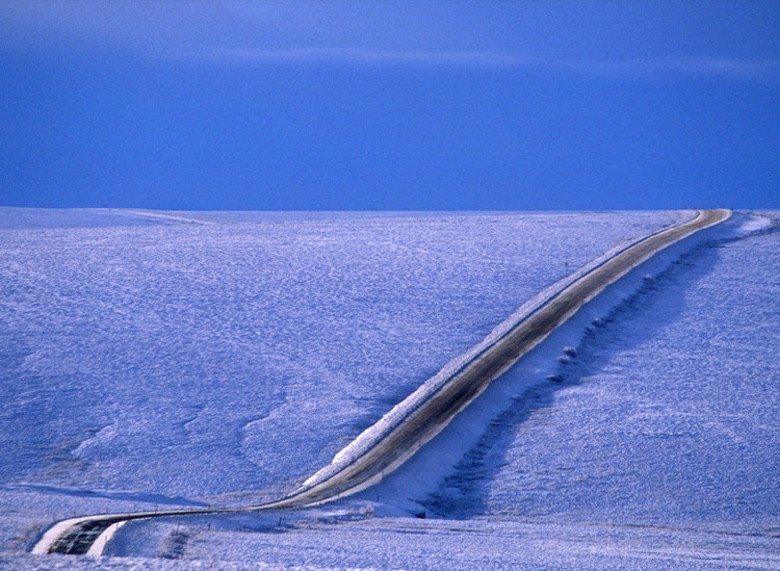
Remote, isolated and virtually guaranteed to kill you if you break down, the 414 mile Dalton Highway was built to support oil exploration in Alaska. There are just three towns along it, with a total population of 60 people.
If you’re thinking of driving it in your Honda Civic, don’t. The giant trucks that ply the route kick up huge clouds of dust, reducing visibility to zero. Windshields and headlights are easily destroyed by flying rocks and debris. There are mammoth potholes ready to destroy your tires or any other part of your car. Oh, and it’s freezing. Drive it only if you’ve got an SUV and a ton of supplies.
Sichuan-Tibet Highway, China
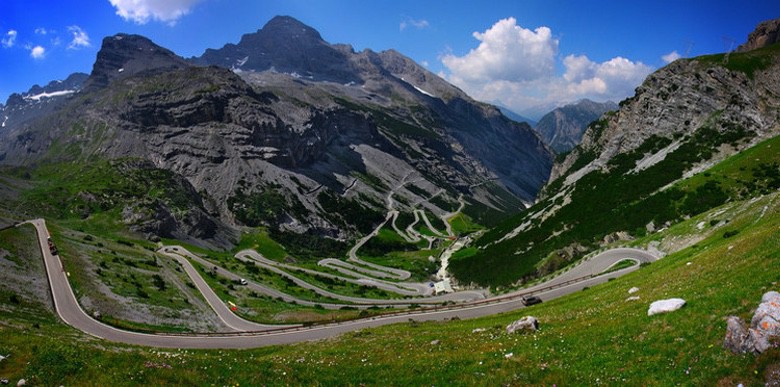
With China embracing car culture, it’s also seen a skyrocketing increase in car accident deaths, climbing from 3.9 to 7.6 per 100,000 of the population between 1985 and 2005. Chief among the culprits is the Sichuan-Tibet Highway, a high-elevation road between Chengdu and Tibet where landslides and rock avalanches are common.
It also has seemingly random police checkpoints, massive drops and climbs, and virtually nothing in the way of services. The scenery is stunning, assuming you can traverse it.
Way to Fairy Meadows, Pakistan
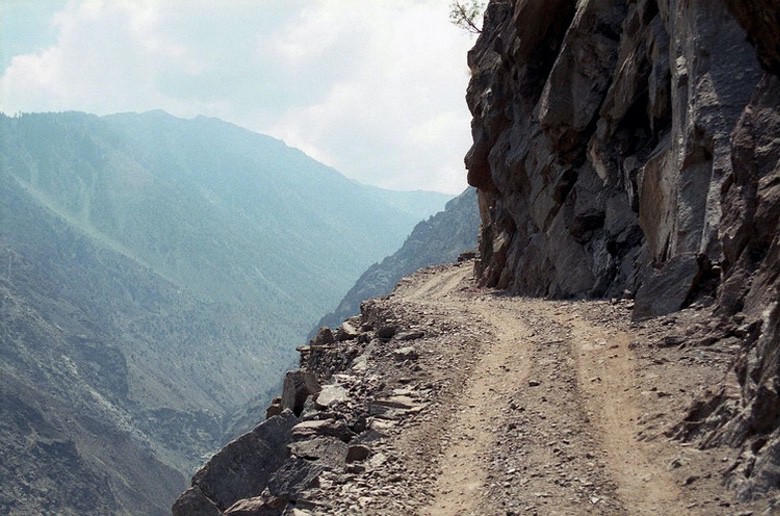
You’d think with a cheerful name like “Way to Fairy Meadows,” this road would be a non-stop carnival of fun and charm. It’s not.
Fairy Meadows itself is a gorgeous runoff about 3,300 meters above sea level, but to get there, you have to traverse a glorified one-way gravel path that was built hundreds of years ago and hasn’t been upgraded or repaired since. It has sharp turns, steep dives, no guardrails and cars come out of nowhere from the other direction. Even watching YouTube videos of someone driving on it is hair-raising.
Halsema Highway, the Philippines
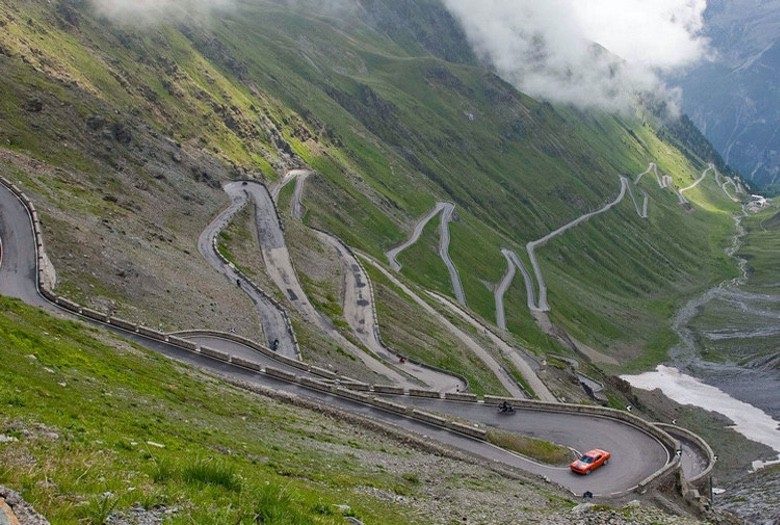
Feel like going to the Philippines and taking your life in your hands? Then check out Halsema Highway, a northern mountain road with insane drops and rises. While the road was recently modernized with recent inventions like guardrails, some of it is still unpaved asphalt, which gets virtually impassible when it rains, which it does, constantly.
Some of it is still unguarded, and buses can topple right off into the abyss.
Skipper’s Canyon Road, New Zealand
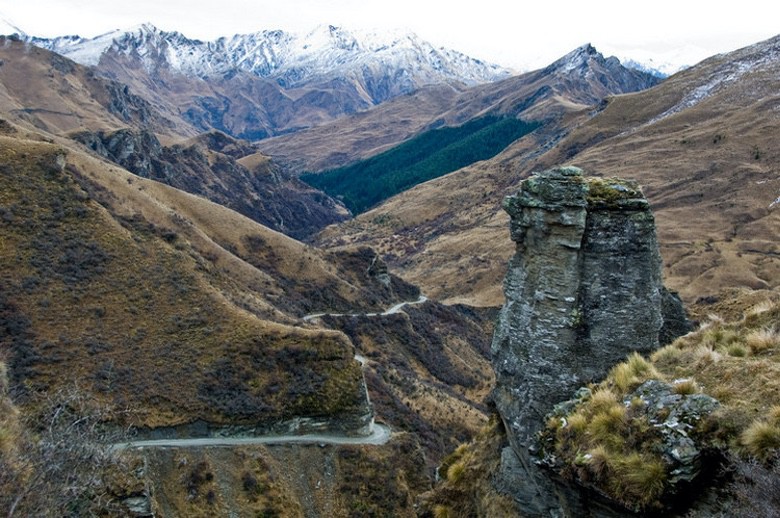
A remote gold mining route in New Zealand, Skipper’s Canyon is so dangerous that you have to apply for a permit before even attempting to drive on it. Not only that, but many car insurance companies won’t payout if you have an accident while driving its remote, unpaved single lane. It’s a one-way dirt track with steep drops and an insanely narrow bridge dropping off into nothingness.
Nonetheless, it’s popular with adventurers and campers who have experience with remote treks.
Canning Stock Route, Australia
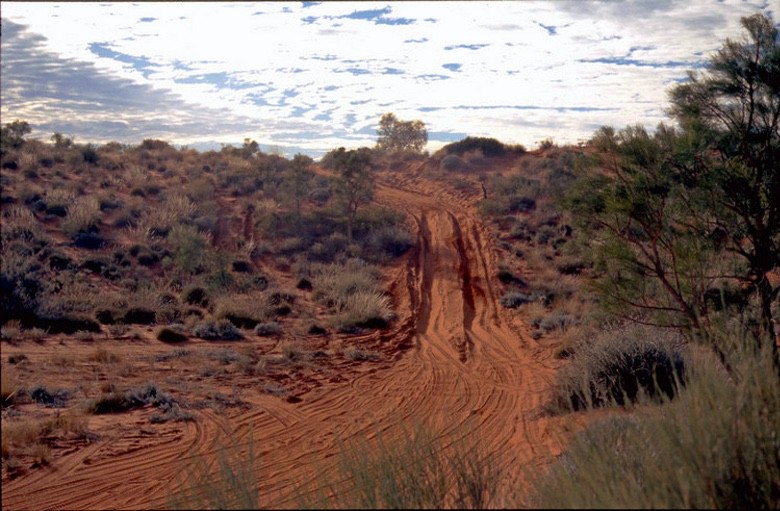
Perhaps the world’s most remote and isolated road, the Canning Stock Route traverses 1,150 miles of empty, scorching desert in Western Australia. Those hardy enough to traverse it will need up to three weeks to cross, a four-wheel-drive vehicle, space for food, water, and spare parts, and at least a basic knowledge of how to fix a breakdown. For gas, you either arrange deliveries depending on where you are or buy it from Aboriginal communities along the way.
Trollstigen, Norway
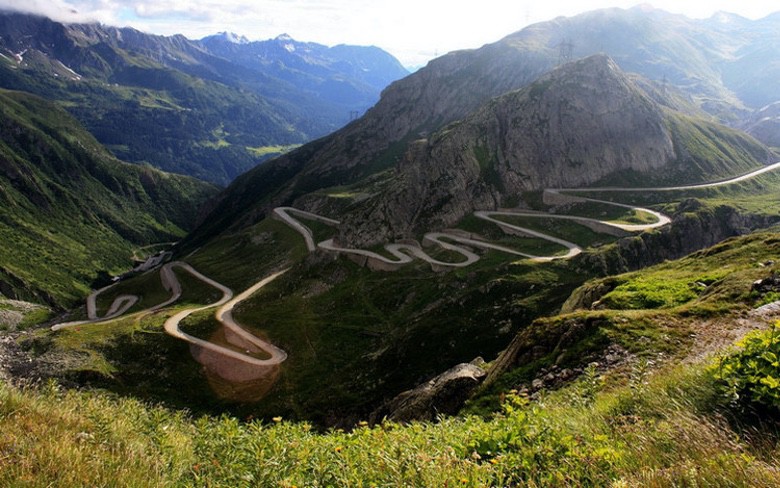
Known as the “Troll’s Path,” Trollstigen is so windy and dangerous that you probably need to be a mythical creature to survive it. It’s closed for much of the year due to bad weather and rockslides, only opening from about May through September. It’s narrow, insanely steep and has a dozen crazy sharp hairpin turns.
Nonetheless, the Troll’s Path is a popular tourist destination and sports some spectacular views – assuming it doesn’t kill you.
Route 138, California
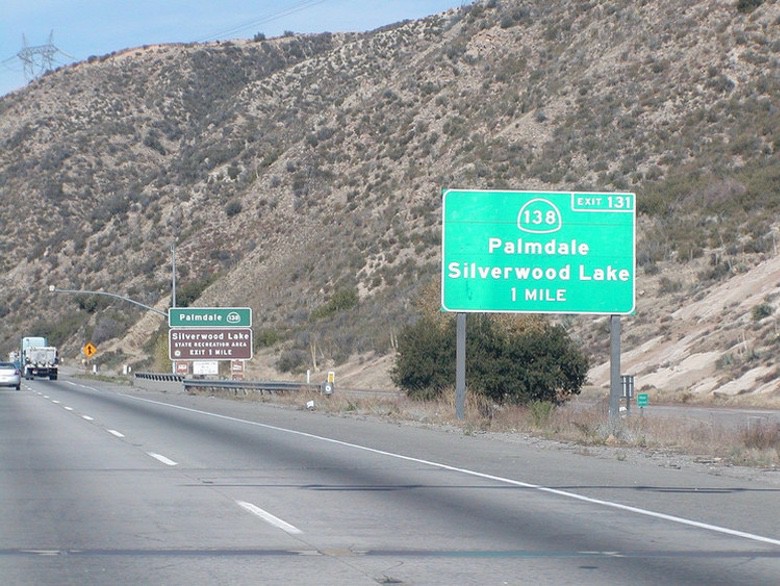
Cheerfully known as “Blood Alley” or the “Death Trap Highway,” the Pearblossom Highway runs from I-15 to Palmdale – and has a terrifying body count. The LA Times reports that during a single five year period from 1996 through 2000, CA-138 experienced 56 fatalities and another 875 injuries, including 410 serious injuries.
The twisty, steep, two-lane road started to be modernized, but astonishingly, local residence fought the improvements tooth and nail. The project has stalled out – and drivers keep getting killed on America’s highway of death.


